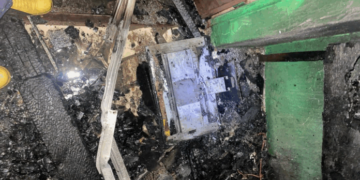Microsoft has stayed fairly cagey about its upcoming Hololens augmented reality headset, but details of the impressive device are beginning to come out.
We know that the Hololens will overlay virtual images onto the real world, turning a wall into a canvas or a tabletop into a videogame, but the device’s technical specs have been kept from the public.
Now, new information about the Hololens has been announced by Bruce Harris, a Microsoft ‘Technical Evangelist’, who was filmed speaking at a recent event in Tel Aviv, Israel.
His speech is around 20 minutes long, but here’s the key details he mentioned.
When pushed to its absolute limit – presumably during gaming or some other processor-intensive task – the Hololens’ battery will last for around 2.5 hours, according to Harris.
During regular use, that battery life increases to around 5.5 hours.
That’s not huge, but the Hololens is a wireless device – users might have to recharge the battery every day, but hopefully the range of motion they’ll be able to take advantage of when wearing the Hololens will make up for it.
Field of View
A few concerns have been raised about the field of view that users will have while using the Hololens.
At a Hololens demo in October last year, we saw the user fighting off giant aliens in an augmented reality game, and an earlier demo showed another user projecting a giant virtual screen on his living room wall.
Those giant holograms that take up your entire vision might not be available with the Hololens at the very start – Harris said that the device’s total field of view will be around the same size as a 15-inch monitor when it’s two feet from your face.
That’s still impressive, and plenty of the Hololens’ applications will still run fine, but hopefully the field of view will be made larger in later versions of the device.
Connectivity
Harris said that the Hololens will be able to connect to almost any WiFi or Bluetooth-equipped device, and can also run any universal Windows 10 app.
Many new electronic devices suffer from a lack of applications at launch – the Hololens shouldn’t have this problem, since users will already have access to the huge range of Microsoft software already out there.
Significantly, Harris also said that you’ll be able to link a number of Hololenses together, potentially making it possible for several people to see and interact with the same hologram.
Microsoft sees the Hololens being used widely in the worlds of design and architecture, where this device-sharing feature could prove a very powerful application.
Release date and price
Obviously, it’s too early to tell when the consumer version of the Hololens will be released to consumers or how much it will cost, but $3,000 (£2,100) developer kits are expected to be delivered in the first quarter of this year.
Source-myjoyonline.com

































